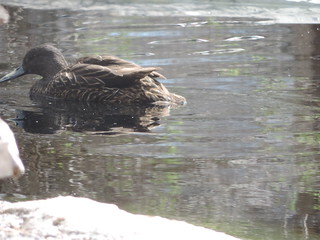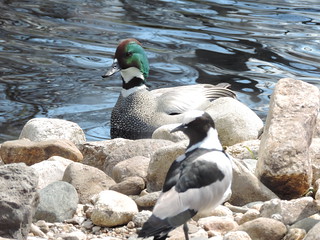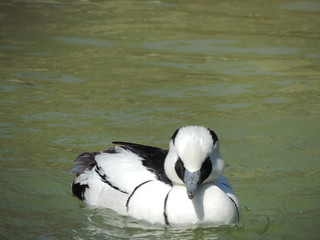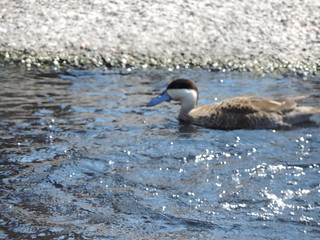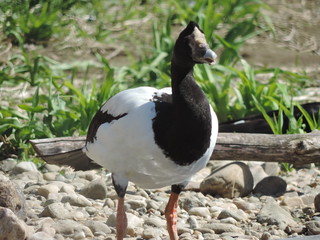So as the title says, my dad and I went to Hammonasset Beach State Park on Sunday morning. We saw many birds, even a lifer here and there. I was hoping to get some Snow Buntings, since they had been sighted. So we set off for Hammonasset Beach.
It was an hour-long drive from where I live, but it was worth the drive. As soon as we pulled up, we saw a small flock of Horned Larks, a lifer for the day.
This was also the first picture with my new camera. Even just on the drive up we saw all kinds of sparrows, blackbirds and gulls. I knew it would be a good day. As soon as we started walking we were flooded with crows, grackles, and Red-winged Blackbirds. They were everywhere throughout the park, and here are some of the photos.
So, we continued walking, As we went, we saw a Tree Swallow, another year bird. They were here early, and it was good seeing them for the first time. They seemed very cold, though. I guess they just weren't ready for that morning CT wind! (That would make two of us. I was also very cold.) We kept walking and saw more blackbirds and such, and they were very loud. We took a short detour, and we saw some doves and cardinals. Not many good photos came out of it though. All the photos are on the bottom of the post.
However, we did hear some good news. We were looking at Song, Swamp and Fox Sparrows (the latter two are yearbirds) along with Purple and House Finches (yearbirds as well). There were also some blackbirds, Brown-headed Cowbirds and robins. Someone said that there was a Snowy Owl sighting at the boardwalk! Of course we wanted to see it! We went out there, and while seeing some Killdeer as well, we got a bad view of it. It was very far away, but it was there! I was excited to see it.
After that, we saw a Yellow-rumped Warbler, which was very hard to photograph. Worse yet, my camera ran out of battery right about then! I will always remember to charge it from now on. So we decided to run back to the car, drop it off, and go see the beach.
As we went to the beach we saw some Lesser Yellowlegs and some more crows. We saw lots of gulls (mainly Herring) on the beach. We also saw some black-headed gulls in the distance, but it was too inconclusive to identify. Even though the Bonaparte's Gull was most common in Hammonasset at this time, I didn't want to be assumptive and add it, because it would be a lifer. So I just called it Laughing Gull in my personal list and said gull sp. on eBird when I reported it. We also saw some Mallards and Black Ducks in the ocean, and a quick flyby of Red-breasted Mergansers. At the end of the point we turned around and headed home.
Well, we didn't go home just yet. We went to another area in the park, still in search of the Snow Bunting. We did see some Hooded and Common Mergansers (that completes the merganser trifecta!) as well as some Great Black-backed Gulls (yearbird). After a quick look at more Mallards and some Canada Geese, we went home. We didn't see a Snow Bunting but I had a great time birding. Also, I did check Horned Lark off my life list, as well as adding ten yearbirds!
Photos:
 |
| Red-winged Blackbird |
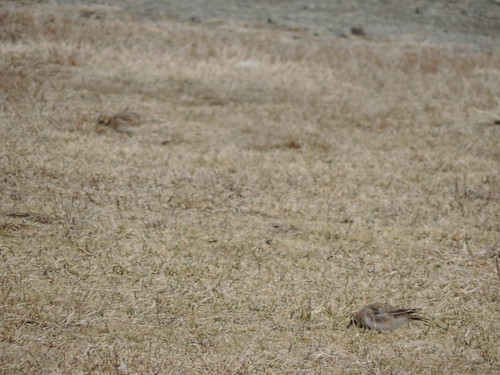 |
| Horned Lark - Lifer |
 |
| Hooded Mergansers and Common Merganser |
 |
| House Finch |
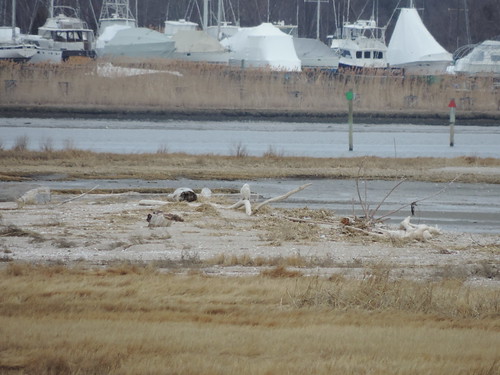 |
| Snowy Owl |
 |
| Common Grackle |
 |
| Mallard |
 |
| Tree Swallow |
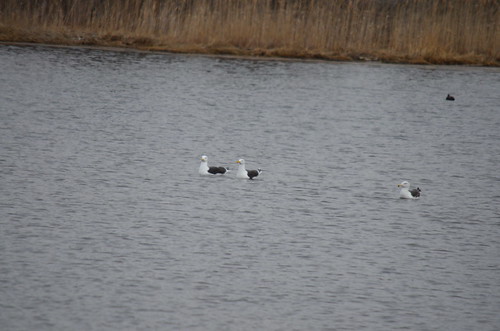 |
| Great Black-backed Gulls |
 |
| Fox Sparrow |
 |
| Lesser Yellowlegs |
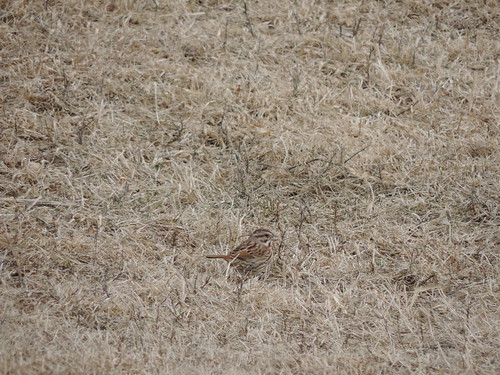 |
| Song Sparrow |
 |
| Killdeer |
 |
| Yellow-rumped Warbler |
 |
| Mourning Dove |
 |
| American Crow |
That's all for now. Thanks for looking.

